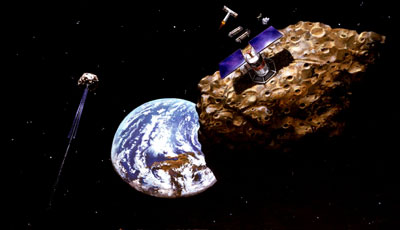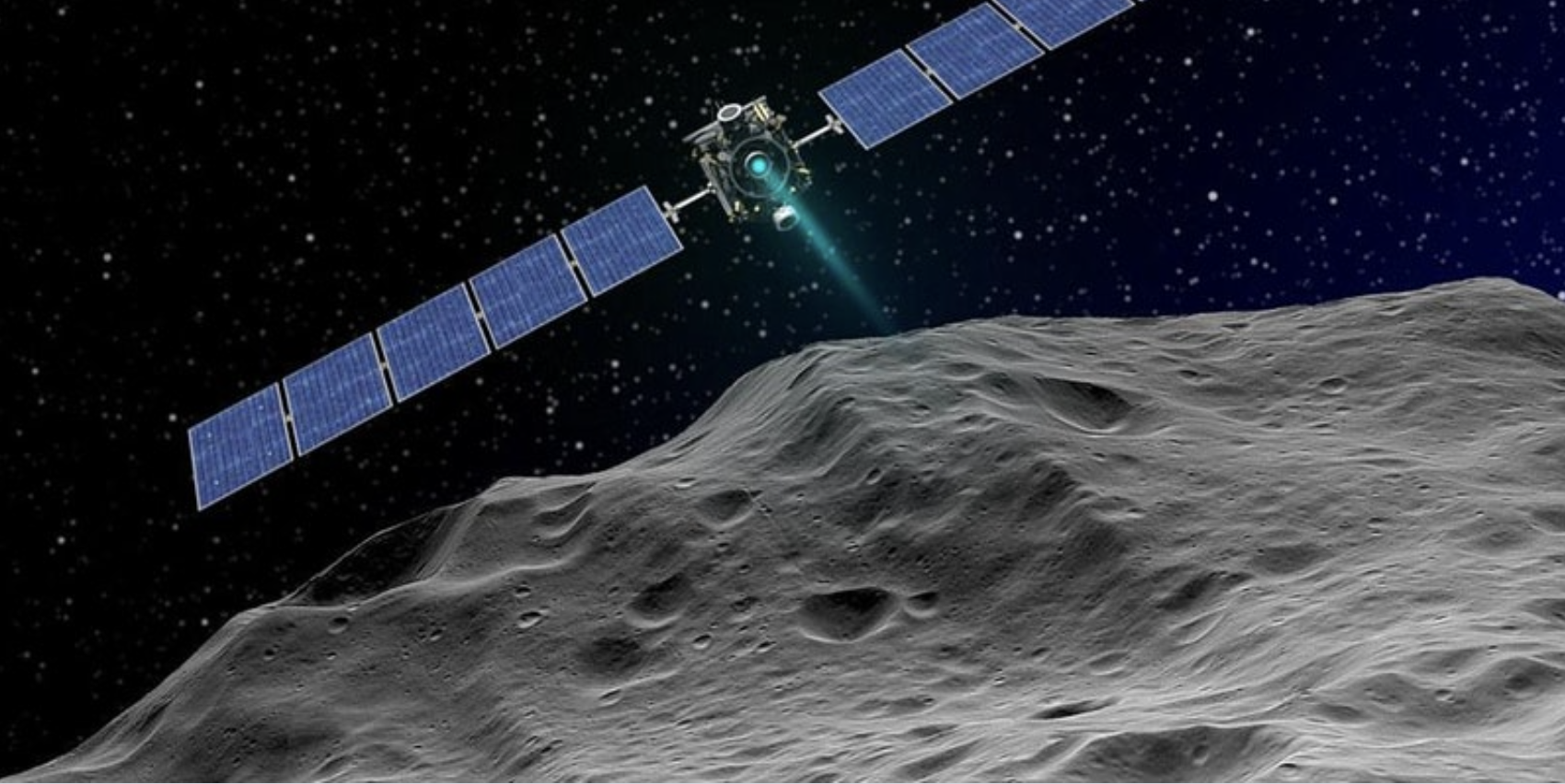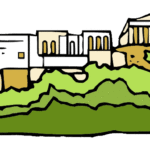Summary of the Long Now Boston Community Conversation March 5, 02018
By Paul Hoxie and George Gantz
Guest speaker: Dr. Martin Elvis, Harvard-Smithsonian Center for Astrophysics
Introduction
Humanity has always had a profound relationship to space. In the long past, the objects in the heavens ruled the days, the seasons and the eons, and the attempt to understand their mysteries served as the raw material for religion, mythology and ritual practices. Over the millennia, our observations, calculations and theories improved. Five centuries ago, the Copernican Revolution brought a profound shift in our relationship with space. The science of space has continued to advance. Fifty years ago, the first human traveled to space. Today, man-made objects litter the skies, and provide a platform for observation, experimentation, communication and surveillance services. We are now on the verge of another profound shift in our relationship with space, as we go from observer, to explorer, to developer.
Dr. Martin Elvis, renowned astrophysicist, led the Long Now Boston conversation on what that future may look like, from the near term, measured in years, to the long term, measured in millennia. One thing seems clear: The potential for a thriving extraterrestrial economy is immense. Asteroid mining and direct fusion drives are just around the corner. In the longer term, exotic scientific discoveries, Ringworlds and Kardashev-type civilizations may be realized. Yet this all comes with technical as well as moral challenges.
One Decade
According to Dr. Elvis, the extraterrestrial economy is about to take off. Research, tourism and manufacturing are the most important pieces of this economy. Research currently being conducted at the International Space Station, may lead to manufacturing of very high value products. For example, samples of high-quality optical glass fibers have been made in space that have virtually no flaws. If the production can be ramped up, they would enable intercontinental communication transmissions without the need for repeaters.
Space tourism, on a small scale, will begin in the next year or two. How many people will be interested in paying the price for a visit to space is unknown – but a number of companies like Blue Origin, Virgin Galactic and SpaceX are entering the business.
Extraterrestrial manufacturing will require building equipment in space using space resources to make them economically viable. Near earth asteroids could provide the material to build the manufacturing equipment. While there are some 15,000 near earth asteroids, slightly less than 1% has the composition needed to be economically attractive for mining iron and platinum. Water is the other valuable space commodity and can be found in about 3% of asteroids.
Work cataloguing the near earth asteroids, their location and path, and identifying those with attractive contents is ongoing. While 90% of the near earth asteroids larger than one-kilometer in diameter have been identified, the other 10% could present a risk to earth and need to be catalogued. Even smaller asteroids, greater than 50 meters in diameter could pose a threat to cities on earth. The sweet spot for mining asteroids is between 20 and 100 meters; they are very numerous and many are yet to be discovered. Assaying the contents of such asteroids in near earth orbits will begin within this decade.
While the technology of asteroid mining is pretty clear, the institutional framework is less so. Legal issues of ownership, rights, and responsibility need to be developed now to avoid the risk of a “Wild West” atmosphere. How do we control potential “extra-legal” activities and abuses such as those seen during the “Gold Rush” in California?
Photo: Bryan Versteeg/Deep Space Industries.
One Century
Exponential growth over a century is hard to sustain even at growth rates of 3%, which the US economy has historically generated. At this rate the economy doubles in about 25 years. At the end of a century of space development, this would extrapolate to about $6.7 trillion per year from the extraterrestrial economy. But this could be a considerable understatement of the impact of space development. The California example is again useful. Who would have guessed that the California state economy would evolve from the Gold Rush commodity extraction into such huge Agriculture, Aerospace, and Entertainment industries over 100 years? Where the extraterrestrial economy will go in a century is literally unimagineable.
Over this century, under exponential growth, it is likely that the near earth asteroids will be mined out. The Asteroid Belt, with about 10 million times the earth’s accessible iron reserves, will be the next target for extraterrestrial mining. This will require new rockets to make the trip in reasonable time (4 years). The direct fusion rocket envisioned at the Princeton Plasma Physics Lab could fill this need, if government funding is forthcoming.
Mars might also serve as a good waypoint way to and from the Asteroid Belt, but likely not on the surface. Orbits around Mars might be a good place to undertake asteroid mining and manufacturing activities.
One Millennium and Beyond
Over one millennium, under exponential growth, even the Asteroid Belt would be fully mined. This prospect raises serious questions. Should we cut back on our growth? What is sustainable? What are the parallels in space with the threats of global warming on Earth? As a general rule, Dr. Elvis suggests using a 1/8 principle as a tripwire to flag the imminence of the exhaustion of resources. At a 3% compound growth rate, it would take about 350 years to reach a point where extraction of resources from the asteroid belt would consume 1/8th of the total resource. Continuing at an exponential growth of 3%, it would take only 60 years to then exhaust the resource.
The one millennium horizon is also intriguing because we can begin to theorize about possible new habitats for humanity. While the concept of a Dyson sphere enclosing the sun now seems infeasible from the standpoint of available solar system resources, a Ringworld – a constructed band surrounding the sun at a distance of about the Earth’s orbit – is not. Larry Niven’s science fiction artifact may yet become a reality.
The theoretical possibilities extend further, to development levels measured in what is known as the Kardashev Scale. Type I civilizations are able to utilize all the energy available at a planetary scale, while Type II would utilize the full energy output of a single star, and Type III the energy output of an entire galaxy. These limits may be beyond comprehension given current science and technology, but it is conceivable that humanity will, within the long now time-scale of 10,000 years, be seriously discussing development at such scales.
Conclusion
Beyond the practical limits of exponential growth and technological feasibility, there are other important questions that we should be asking as we develop a space economy. Are there special places in space that should be left intact? For example, should we put brightly lit manufacturing or tourist facilities on the Moon? Should we mine the rings of Saturn for water? Should we put cities and domes on Mars? We are also beginning to identify unique crystalline materials on asteroids as well as organic substances; Should we investigate and preserve these before they are simply mined for bulk materials? Are there any life forms on other planets that should be left untouched, potentially to evolve undisturbed? What does it mean to talk about the sustainability of the Solar System?
These questions need to be addressed now, even as the technology and economics of space commercialization and exploitation begins to take shape.
____________________________
Long Now Boston
LONG NOW BOSTON is in the process of forming as a 501(c)(3) that will be organizationally independent from but philosophically aligned with the Long Now Foundation. Long Now Boston is intended to provide a forum for discussing, investigating and engaging in issues that have long term implications for our global cultures. Long Now Boston hosts a monthly Community Conversation series at the Café ArtScience in Cambridge, MA.
The next Community Conversation will be held on Thursday April 5th and will feature a presentation by Professor Loren J. Samons II from Boston University on “The Myth of Democracy? From Pericles’ Athens to Modern Times.” Doors open at 6PM and the presentation begins at 7PM. Tickets are available at Eventbrite.
____________________________
Biography
Dr. Martin Elvis is an Astrophysicist at the Harvard-Smithsonian Center for Astrophysics. He was born in the United Kingdom, where he earned his PhD and began his career in the new field of X-ray observations of deep space. Indeed, his work confirmed the existence of powerful X-ray emissions from galactic nuclei – which we now know to be from super massive black holes. Dr. Elvis moved to Cambridge, Massachusetts in 1980 and continued his groundbreaking research in X-ray astronomy, working on the Einstein X-ray telescope mission and later the much larger CHANDRA project. Dr. Elvis has published over 400 journal papers and is one of the 250 most highly cited researchers in astronomy and space physics, with more than 28,000 citations.
In addition to his significant contributions to the science of deep space objects, Dr. Elvis has a passion for near earth objects and the opportunities they offer for future space exploration and development. He is convinced that the commercial potential of asteroids will transform our space endeavors to a truly large scale, and will, in the process, make access to space cheap and routine.

Photo provided by Dr. Martin Elvis.

















